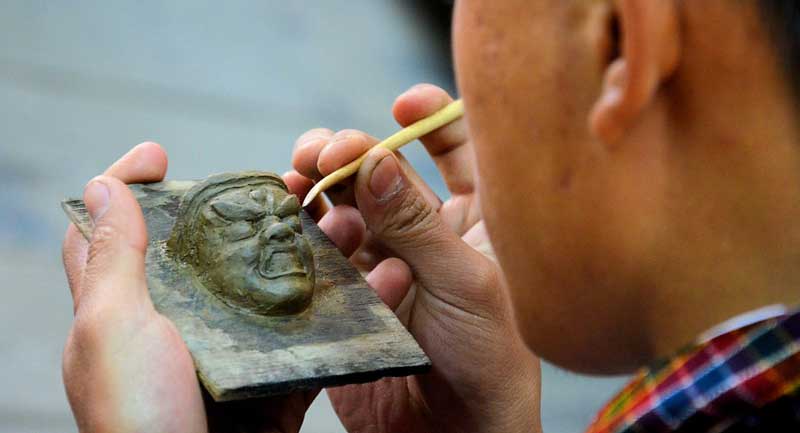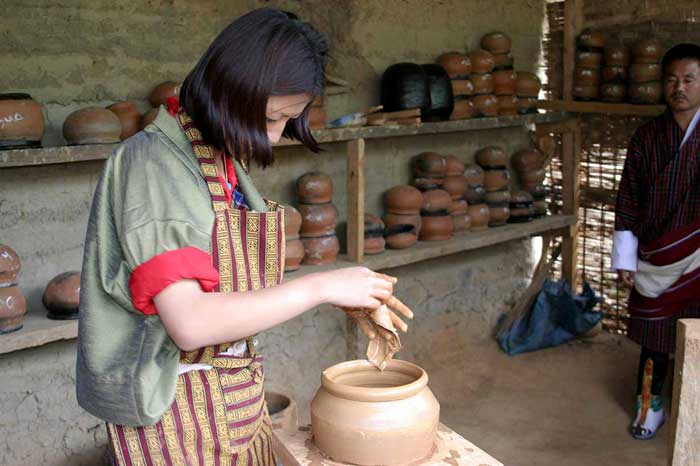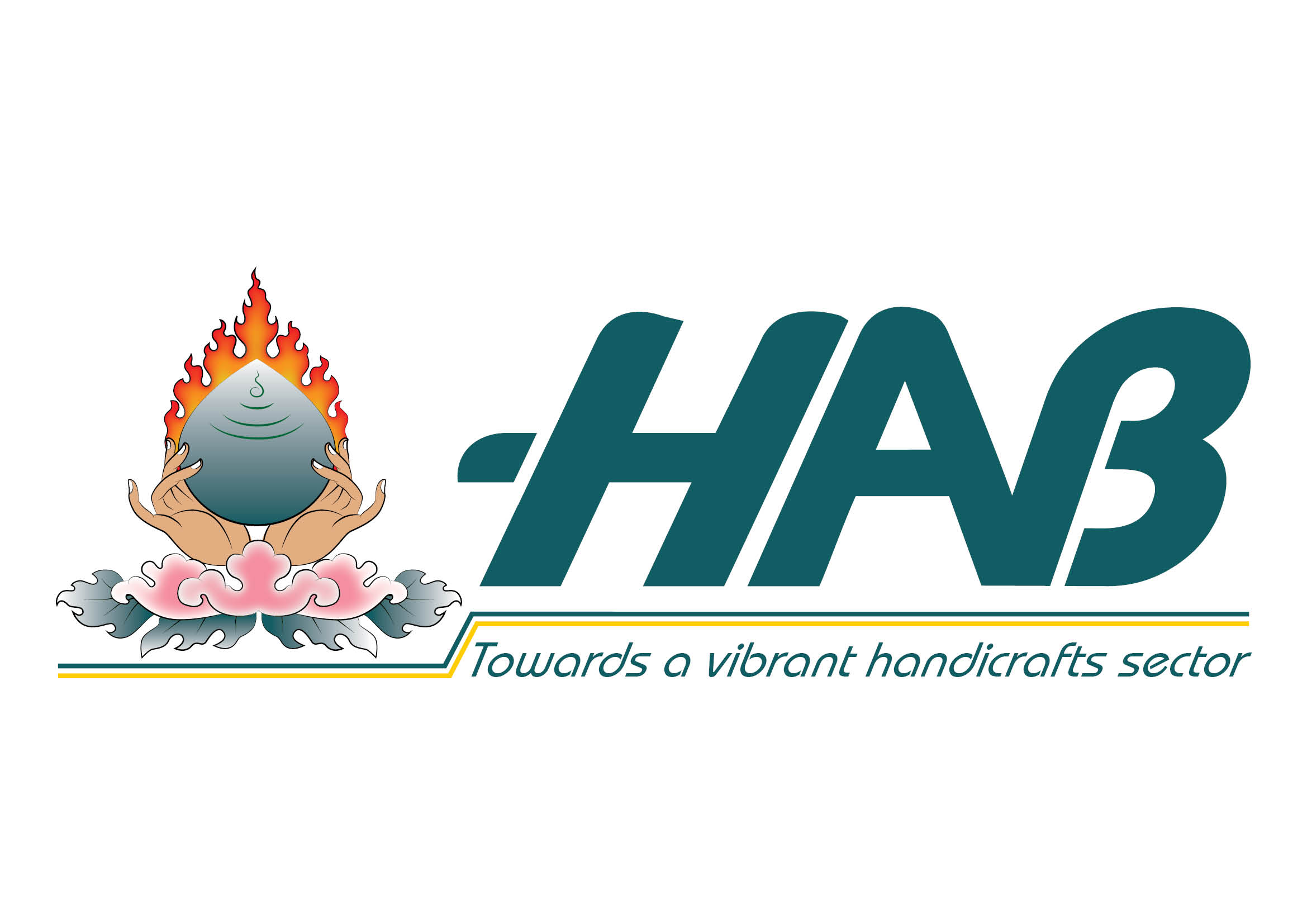Jinzo
The Art and Craft of Religious Clay Sculptures
Bhutanese believe religious icons created using the Jinzo clay-working technique—their practitioners are called Jinzops—are imbued with sacred qualities because they are made from the naturally occurring elements of earth and water. In their essence, these natural elements connected with life and growth are thought to better than the base metals of bronze, copper or iron. The internal framework for such statues and images is built from bamboo, cane, or long-stemmed grass. The central column around which such an image is built is called Sokshing, or “soul-wood,” which represents the sacred energy resident in the image. The Sokshing is marked in various sections corresponding to the various parts of a body, usually representing a deity; an arhat or religious teacher; a spiritual protector; a Buddha or a Bodhisattva. The uppermost part of this central axis marked for the crown, followed by the neck, the heart, the navel and so forth. Around each of those marks are wrapped tightly wound scrolls of scriptural text written in gold paint, called Zung. Once the statue is finished, the head goes on last. Animal glue is brushed on over the completed statue, left to dry and, finally, painted.


